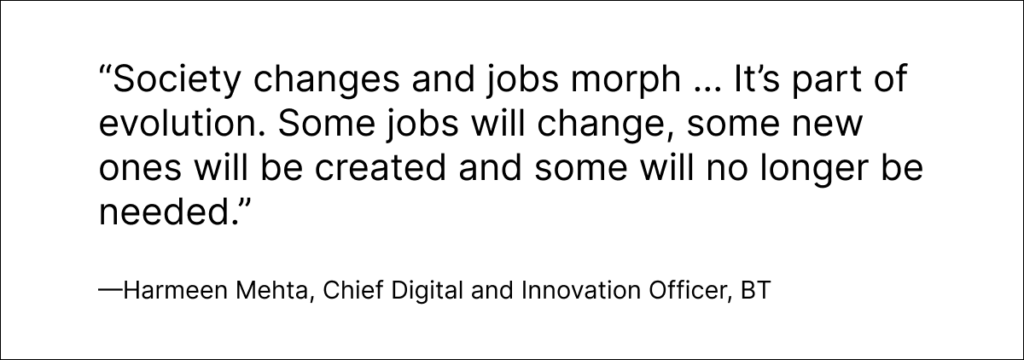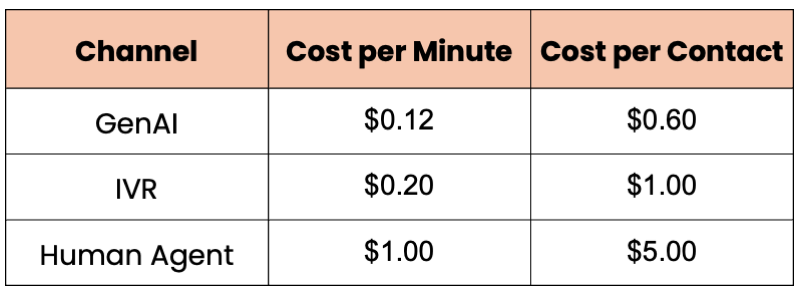If you focus on business value, AI pays for itself
While I was at the recent DTW conference in Copenhagen, I heard telco execs murmuring about whether implementing artificial intelligence (AI) in their organizations was becoming “too expensive.” My reaction: only if you’re doing it wrong. When implemented strategically, AI isn’t a cost center—it’s a productivity accelerator that pays for itself.
Moore’s Law, but with AI
To start, let’s talk about how Moore’s Law is happening with the pricing and performance of the LLMs themselves. While you sleep, each new generation of AI models brings exponential growth in capabilities while costs plummet. Here’s a summary of improvements over the last few years using ChatGPT-3 and Claude 1 as the performance and pricing baseline:
- 2021: GPT-3.5 – 3x improvement, 40% cost reduction
- 2022: GPT-4 – 10x improvement, 60% cost reduction
- 2023: Claude 2 – 25x improvement, 75% cost reduction
- 2024: Claude 3 – 50x improvement, 85% cost reduction
This isn’t easing up. Anthropic’s Claude 3.5 Sonnet outperforms its predecessor while being significantly less expensive, and OpenAI’s GPT-4o offers multimodal capabilities at half the price and twice the speed of GPT-4 Turbo. Plus, open-source models like Meta’s LLaMA 3 are becoming just as good as the original models, putting downward pressure on prices across the board.
How do you know?
It’s great that prices are decreasing, but how do you know if AI is actually helping your organization?
First, figure out if your team is really embracing AI (and not just paying it lip service). A quick and easy way to figure out if your team is using AI is to just take a look at your AI bills. AI vendors like OpenAI, Anthropic, and the hyperscalers charge for AI usage by API call or seat. If your people are exploring, experimenting, and embracing generative AI (GenAI), your bills should be going UP. If they’re not, you might not be using AI as much as you think.
But besides seeing usage increase across your organization, the key to getting ROI on AI is to make sure you’re achieving real business value.
One well-known story in telco is how the UK’s BT Group (BT) plans to cut up to 55,000 jobs by 2030, representing more than 40% of its current 130,000-strong global workforce. Of the 55,000 job cuts, BT CEO Philip Jansen stated that approximately 10,000 roles could be replaced by AI, particularly in customer service and network management. BT aims to achieve £3 billion in annual cost savings by 2025 by leveraging AI and digital advancements to enhance its services and operations.

But you don’t have to be a huge, old-school telco company to get similarly impressive results. For example, the Swedish fintech company Klarna used GenAI to reduce its workforce needs. Its AI chatbot replaced approximately 700 full-time customer service roles, resulting in $40 million in savings. This successful implementation of AI led to Klarna reporting its first quarterly profit in four years.
While I don’t think the goal of implementing AI is solely to reduce headcount, I also don’t think you’re going to get these kinds of impressive results simply by deploying a series of co-pilots that augment workers’ tasks (e.g., writing the answer for a human, where the human is the “quality checker” and validates answers before applying the result). You need to be EXTREME in your vision of what’s possible, striving to replace the worker completely, and seeing just how far you can go. When you compare AI to human labor, especially for entry-level tasks, the cost-effectiveness becomes super clear:

For organizations that handle large volumes of requests per year, both IVR and GenAI become more cost-effective than human agents. As AI systems improve with use, they’ll handle more queries correctly without human involvement, increasing their value further. So to implement and maximize business value, you need to aim for full worker replacement, not just supplementation.
Ready to harness AI’s potential in your telco?
Here’s how to get started:
- Identify high-cost or human-intensive areas: Look for processes that require high volume, repetitive tasks, or data-intensive decision-making. Focus on areas with high-cost workers and use AI to document their expertise in a way that multiplies their impact on the organization.
- Start small, but think big: Begin with a pilot project in one area, but design it to repeat the pattern throughout the organization. Our own work with our customer support AI agents was designed in a way where the AI agent could be applied to finance work, product management, and sales.
- Stay flexible: Build your AI infrastructure to switch easily between different LLMs to take advantage of rapid advancements and price reductions.
- Upskill your workforce: Give everyone ready access to AI tools to encourage daily use in all areas of their work. Work with your human resources partner to envision future roles and begin transitioning AI leaders into the new org structure now.
- Measure relentlessly: Establish clear KPIs for your AI implementation, tracking both cost savings and value creation. Measure weekly to track progress. Improvements and setbacks indicate that the team is experimenting and trying new ideas, which is a good sign.
Remember: Every AI project should not only cover its costs but also generate measurable business value. Start with high-impact areas, prove the self-funding model, then scale. The capabilities you deploy today don’t just pay for themselves; they’re driving productivity improvements that were unimaginable just a few years ago.
Ready to turn AI into your self-funding secret weapon? Totogi is here to help. We’re not just talking about improving operations—we have AI solutions that deliver real ROI (cost savings AND revenue growth!). Solutions like BSS Magic help you customize your current BSS without expensive CRs or technical resources. Or use our PlanAI, which promises 10% top line growth! Now THAT’S the kind of PAYBACK I’m talking about.
Recent Posts

 Get my FREE insider newsletter, delivered every two weeks, with curated content to help telco execs across the globe move to the public cloud.
Get my FREE insider newsletter, delivered every two weeks, with curated content to help telco execs across the globe move to the public cloud.
Listen
Microsoft Azure is helping telcos manage their data for AI workloads and prepare for an AI revolution.
Watch
Operators can use AI to harmonize data structures, provide a common language across the back-office IT estate, and enable “zero UI” interactions.
Read
AI is transforming telcos’ BSS data, democratizing access to deliver strategic insights, predictive analytics, operational efficiency, and more.
